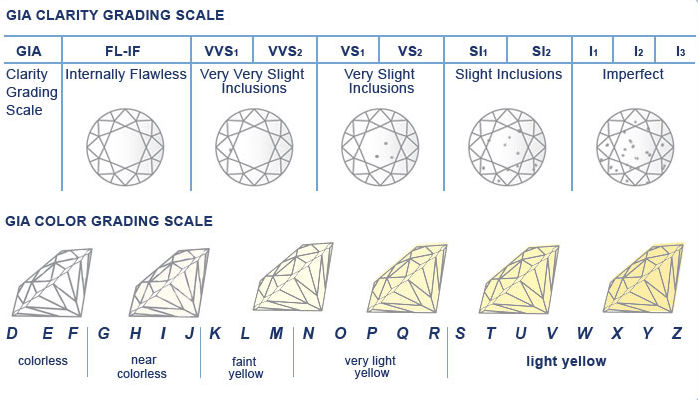The Diamond certificate is identifies and attests to the specific characteristics of a diamond. A diamond certificate will consist of detailed measurements of the diamond’s dimensions which is called size, an assessment of the symmetry and quality of polish of the diamond, and an analysis of the diamond’s quality resulting in standardized grades in the “four C” [4 C’] categories: Cut, Clarity, Color, and Carat Weight. Apart from a diagram of diamond’s special quirks or inclusions, the certificate details its measurements and grades such characteristics as color, clarity and clarity. The official document (certificate) assures that diamond is what it claims to be.
The COLOUR of Diamond:
Most diamonds are naturally having a touch of color in them, mostly yellow, brown and gray. The rarest diamonds are white or colorless. In the late 1950’s The Gemological Institute of America (GIA) introduced the color grading system that is used today. The most important thing to know about color when it comes to diamonds is, in general, the less color a diamond has, the more valuable it is, all other factors being equal. The color grade of a diamond reflects the extent to which coloration is visible within the diamond. Diamonds that have less visible coloration receive a better color rating, while diamonds with the lowest color ratings have coloration that is clearly visible to the naked eye. The color of a diamond may be affected by chemical impurities or structural defects in the crystal lattice. A diamond’s color also has a great impact on its cost. The color grading system for diamonds uses the letters of the alphabet from D through Z. There are many differing scales used by different organizations for color, but the most common one is an alphabetic scale starting at the color D. This is the whitest color exhibited by diamond. Color grades are established by comparing the diamond in question to a set of standard master diamonds, under controlled conditions.
The more details are yet come soon! Stay tuned…
